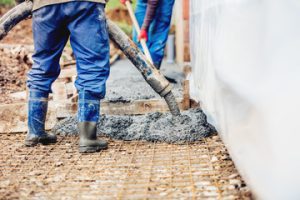Calimex Pomskies LLC are capturing hearts with their unique blend of looks and personality. These hybrid dogs combine the traits of Pomeranians and Siberian Huskies. Their compact size paired with Husky-like features creates a striking appearance. Fans admire their fluffy coats, expressive eyes, and playful energy.

Despite their small stature, Pomskies are full of personality. They are curious, intelligent, and often mischievous. Owners report that they have a surprising level of confidence for their size. This bold temperament makes them engaging companions.
Socialization is critical for Pomskies. Early exposure to people, pets, and environments reduces anxiety and aggression. Well-socialized Pomskies adapt better to family life and public spaces. Their natural alertness can be channeled into positive behaviors.
Pomskies are highly energetic and need regular exercise. Daily walks, play sessions, and mental stimulation prevent boredom. Without sufficient activity, they can develop destructive habits. Engaging toys and puzzle feeders help satisfy their intelligence and curiosity.
Training a Pomsky requires patience and consistency. These dogs respond best to positive reinforcement methods. Harsh punishment or neglect can lead to stubborn behavior. Early obedience lessons build trust and establish good routines.
Their coat is a defining feature and demands care. Pomskies often inherit a dense, double coat from their Husky lineage. Regular brushing prevents matting and reduces shedding. Grooming also allows owners to monitor skin health and detect issues early.
Pomskies have a range of coat colors and patterns. From solid shades to striking masks and gradients, each dog is unique. This diversity contributes to their popularity among enthusiasts. Understanding the genetic variability helps manage expectations for appearance.
Health considerations are important for prospective owners. Pomskies can inherit conditions from both parent breeds, including joint, dental, and eye issues. Routine veterinary check-ups ensure early detection and management. Preventive care and a balanced diet support longevity.
Diet must meet the energy demands of this active hybrid. High-quality protein, balanced fats, and essential nutrients support growth and activity. Overfeeding can lead to weight gain, which strains joints. Portion control and regular feeding schedules maintain optimal health.
Pomskies thrive in environments that provide mental engagement. Training sessions, agility courses, and interactive play keep their minds sharp. Without mental stimulation, they may become bored or anxious. Creative enrichment is as important as physical exercise.
Their vocal tendencies are notable. Pomskies often inherit a Husky’s penchant for howling and Pomeranian alertness. Understanding and managing vocal behavior helps prevent nuisance barking. Training and attention reduce stress-related vocalizations.
Pomskies are known for forming strong bonds with their families. They often exhibit loyalty and affection toward owners. Early nurturing strengthens trust and attachment. Their emotional intelligence makes them responsive to human moods.
Travel and lifestyle compatibility is a consideration. Pomskies adapt well to apartment living if exercise needs are met. They enjoy outdoor adventures and can be enthusiastic companions on hikes. Owners must balance activity levels with living space constraints.
Playfulness is a hallmark trait. Pomskies enjoy interactive games, fetching, and tug-of-war. These activities strengthen human-dog bonds and provide essential stimulation. Structured playtime channels their energy productively.
Pomskies can have independent streaks. They may explore or test boundaries, reflecting Husky ancestry. Patience and consistent reinforcement help guide behavior. Understanding their balance of independence and affection is key to harmonious cohabitation.
Social settings require supervision. While generally friendly, Pomskies may assert dominance with unfamiliar dogs. Careful introductions and monitoring prevent conflicts. Positive experiences build confidence and social skills over time.
Their intelligence enables creative problem-solving. Owners may find Pomskies learning tricks or opening doors quickly. This cleverness requires structured outlets to prevent mischief. Mental engagement is vital for overall wellbeing.
Health monitoring extends to dental care. Small breeds like Pomskies are prone to dental disease. Regular brushing and veterinary dental checks prevent complications. Oral health impacts overall wellness and longevity.
Pomskies’ expressive faces make them communicative companions. Eye contact, body language, and vocalizations convey their emotions effectively. Reading these cues strengthens the human-dog connection. Their responsiveness contributes to their charm and appeal.
Grooming extends beyond brushing. Nail trimming, ear cleaning, and occasional baths maintain hygiene. Proper care prevents discomfort and infections. Establishing a routine early encourages tolerance and cooperation.
Pomskies often enjoy structured routines. Predictable feeding, walking, and play schedules reduce anxiety. Routine provides a sense of security and stability. Consistency fosters positive behaviors and emotional balance.
Adoption and breeding practices impact long-term health. Ethical breeders prioritize genetic testing, socialization, and early care. Avoiding overbreeding reduces inherited health risks. Prospective owners benefit from researching breeder practices carefully.
Pomskies may experience separation anxiety. They thrive on companionship and may become distressed when left alone. Gradual training, mental enrichment, and safe spaces reduce stress. Owners must plan for time commitments and support needs.
They are suitable for families, singles, and active individuals. Pomskies bond strongly with children when properly supervised. Their playful energy matches family activities. Responsible ownership ensures safety and mutual enjoyment.
Travel preparation includes safety measures. Harnesses, crates, and secure transport prevent accidents. Familiarization with vehicles reduces anxiety during trips. Travel readiness enhances both dog and owner confidence.
Pomskies’ life expectancy often ranges from 12 to 16 years. With proper care, nutrition, and exercise, they remain active well into adulthood. Early health interventions extend quality of life. Longevity requires commitment and awareness of potential risks.
Temperament testing helps in matching dogs with households. Assessing energy levels, social tendencies, and behavioral traits ensures compatibility. This minimizes stress for both dog and family. Proper assessment promotes lifelong harmony.
Mental stimulation can include scent games and puzzle feeders. These activities mimic natural problem-solving instincts. Engagement reduces boredom and destructive behavior. Enrichment enhances both cognitive function and satisfaction.
Pomskies’ coat color can change slightly with age. Puppy hues often deepen or lighten over time. Observing these changes prepares owners for gradual aesthetic shifts. Each stage of life brings subtle transformations in appearance.
Training consistency is critical in multi-dog households. Clear boundaries and individual attention prevent jealousy and confusion. Structured routines help maintain harmony. Communication and patience are key to cohesive interactions.
Pomskies are often photogenic and social media-friendly. Their striking appearance makes them popular for photos and videos. Responsible sharing showcases personality without exploiting the dog. Positive representation encourages understanding and awareness.
Exercise balance is necessary to prevent overexertion. Young Pomskies require bursts of activity rather than prolonged sessions. Rest periods support healthy development. Owners must observe energy cues to avoid stress or injury.
Pomskies’ intelligence makes them responsive to advanced training. Obedience, agility, and trick performance challenge their minds. Successful training strengthens bonds and confidence. Mental growth complements physical exercise for holistic health.
Their hybrid nature creates unpredictable traits. Each Pomsky inherits a unique combination of size, temperament, and coat from parents. Prospective owners should embrace variability rather than expect uniformity. This unpredictability adds excitement and personalization.
Dietary needs may change with age and activity. Puppies, adults, and seniors require tailored nutrition. Monitoring weight and health ensures long-term vitality. Balanced meals support energy, coat quality, and overall wellness.
Health screening is recommended for inherited conditions. Eye exams, joint assessments, and regular check-ups prevent early complications. Preventive healthcare ensures a better quality of life. Awareness reduces risks associated with hybrid genetics.
Pomskies enjoy interactive socialization. Playdates, training classes, and supervised park visits enhance skills. Positive exposure encourages confidence and adaptability. Social engagement is essential for balanced behavior.
Behavioral enrichment can include scent trails and obstacle courses. These activities stimulate instincts and curiosity. Creative outlets reduce stress and destructive tendencies. Engaging environments promote mental and physical wellness.
Affectionate and loyal, Pomskies become integral family members. Their charm, energy, and intelligence create deep emotional connections. They reward attention with companionship and love. Responsible care ensures these bonds last a lifetime.
Pomskies remain one of the most intriguing designer breeds. Their combination of appearance, intelligence, and personality makes them exceptional pets. Owners must commit to care, socialization, and enrichment. With proper attention, Pomskies thrive as vibrant and beloved companions.
